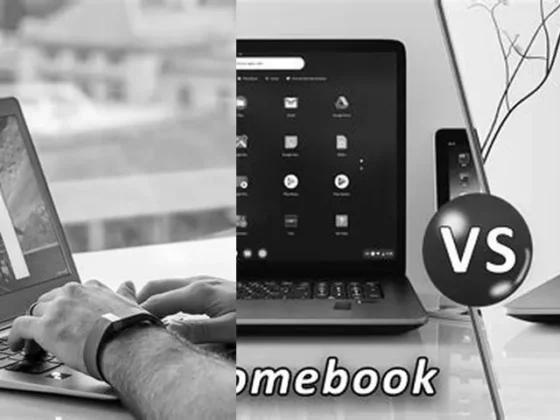Is Your Pixel Dead or Stuck? Understanding the Fate of Black Pixels: Is Black Pixel Dead Or Stuck? Understanding the Enigmatic Fate of Your Pixels
Have you ever stared at your screen, perplexed by that stubborn black pixel that refuses to budge? Is it dead or just stuck? The distinction may seem trivial, but knowing the difference can save you time, money, and frustration.
In this enlightening blog post, we’ll unravel the mystery behind black pixels and explore the contrasting destinies they can have. From understanding the science behind dead and stuck pixels to practical tips for addressing them, we’ve got you covered.
But before we dive into the technicalities, let’s pause for a moment and appreciate the irony that even in this digital age, a tiny dot on your screen can cause such a fuss. It’s almost as if these pixels have a mischievous sense of humor, playing tricks on us when we least expect it.
So, whether you’re a tech enthusiast seeking answers or simply someone who can’t stand that pesky black dot, join us on this pixel-perfect journey. Together, we’ll navigate the realm of dead and stuck pixels, armed with knowledge and a touch of humor.
Get ready to bid farewell to your pixel predicaments and say hello to a clearer, more vibrant screen. Are you ready to unlock the secrets of these enigmatic black pixels? Let’s dive in!
Understanding the Difference Between Black Pixels: Dead or Stuck?
Dealing with pixel issues on your digital screens can be frustrating, especially when you’re unsure if you’re facing a dead pixel or a stuck pixel. Although they may seem similar at first glance, understanding the difference between the two can save you time and potentially money when seeking a solution.
What Are Stuck Pixels?
Stuck pixels can manifest as red, green, blue, or yellow spots on your screen. These little dots are called “stuck” because they are essentially frozen on one color and do not function as they should during screen image changes. Unlike dead pixels, which are always black, stuck pixels may sometimes flicker, giving you a visual clue that they are still operational but just not performing correctly.
Identifying Dead Pixels
Dead pixels, on the other hand, are always black and do not change color, no matter what images are displayed on the screen. These pixels are called “dead” because they are unresponsive. Black pixels are regions of the sensor with significantly lower response than their neighbors. This lack of response is typically formed due to contamination on the sensor surface or embedded within the sensor itself.
Can Stuck Pixels Be Fixed?
There’s a glimmer of hope when it comes to stuck pixels. Since they are not completely dead, certain methods can bring them back to life. For example, leaving the monitor off for a full day may help fix a recently stuck pixel. This rest period gives the pixel a chance to reset and start functioning normally again.
Preventing Further Damage to Pixels
Stuck pixels can be symptomatic of overuse, and taking care to rest your monitor can help prevent further pixel damage. By giving your screen some downtime, you may extend its lifespan and maintain image quality.
Why Do Stuck Pixels Occur?
Various factors can cause pixels to become stuck. For instance, if you stream content over the internet and experience a temporary slowdown in your connection, this could result in stuck pixels. These stuck pixels are not the result of screen defects but rather temporary data transmission issues.
Are Stuck Pixels Permanent?
While stuck pixels can be a nuisance, they are not always permanent. Unlike dead pixels which have lost their functionality completely, stuck pixels remain in one place and may not change color due to a temporary malfunction.
How to Identify If Your Pixel is Dead or Stuck
To determine whether you have a dead or stuck pixel, you can perform a simple test. Change the background color of your screen to various colors. If the pixel changes color with the background, it is stuck. If it remains black regardless of the background color, it is dead.
Do Stuck Pixels Change Color?
Stuck pixels are normally red, green, blue, or yellow and can be identified when they stand out against the intended display color. They do not change color when they are supposed to, which is how they earn their ‘stuck’ designation.
Practical Tips for Addressing Stuck Pixels
If you’ve identified stuck pixels on your screen, there are several DIY methods you can try to fix them. Some people recommend gently massaging the area around the stuck pixel with a soft cloth to stimulate it. Others suggest using pixel-fixing software that flashes rapidly in different colors to jolt the pixel back into normal behavior.
When to Seek Professional Help
If your stuck pixels remain stubbornly in place despite your efforts, it may be time to consult with a professional. Monitors and screens come with warranties that sometimes cover pixel issues, so be sure to check your warranty before reaching out for repair or replacement.
Managing Expectations and Screen Care
It’s important to note that while stuck pixels can often be fixed, dead pixels are usually a permanent issue. Proper screen care and allowing your monitor to rest can help prevent new pixels from getting stuck. As technology advances, screens are becoming more resilient, but they still require mindful use to maintain optimum performance.
Maintaining Screen Health
To keep your screen in top condition, make sure to clean it regularly with appropriate cleaning solutions and microfiber cloths. Avoid pressing too hard on the screen, which can cause pixel damage, and give your monitor a break when it’s not in use.
Conclusion: The Fate of Your Pixels
In conclusion, distinguishing between dead and stuck pixels is crucial for addressing the issue appropriately. While stuck pixels have a chance of being fixed with some simple troubleshooting steps, dead pixels are usually a sign of permanent damage. By understanding these differences and taking preventive measures, you can ensure a longer life for your screen and a better viewing experience.
Remember to take care of your digital devices with regular maintenance and by allowing them periods of rest. This way, you minimize the risk of stuck pixels and maintain the integrity of your screen’s display. If all else fails, consult with a professional or check your warranty for possible replacement options.
Always keep an eye on your screen’s pixel health, and don’t ignore the signs of potential issues. A proactive approach can save you from the inconvenience of dealing with stuck or dead pixels in the long run.
FAQ & Related Questions about Black Pixel
Q: What is the difference between dead pixels and stuck pixels?
A: Dead pixels are black and do not change color, while stuck pixels appear as dots in one particular color, such as red, green, or blue.
Q: Can stuck pixels go away on their own?
A: Stuck pixels may go away on their own, but there is no definite timeline. It could disappear in a week or remain for the device’s lifetime.
Q: How can I fix a stuck pixel?
A: You can try using JScreenFix, a free web app that fixes many stuck pixels in less than 10 minutes. There are also other methods available to fix stuck pixels.
Q: Are stuck pixels permanent?
A: Stuck pixels are not necessarily permanent. They are one of the most fixable problems with pixels. They can disappear on their own or be fixed using various methods.
Q: What causes black pixels?
A: Black pixels are regions of the sensor with significantly lower response than their neighbors. They are typically formed due to contamination on the sensor surface or embedded in the sensor.


